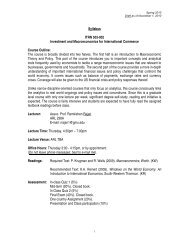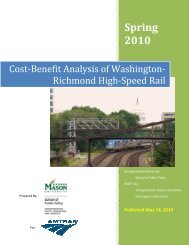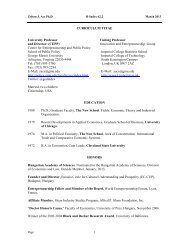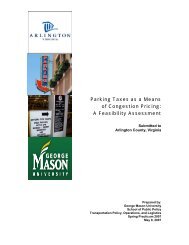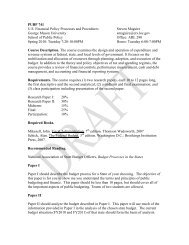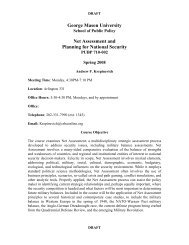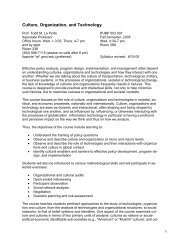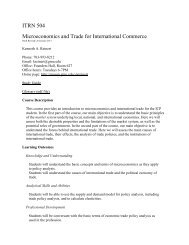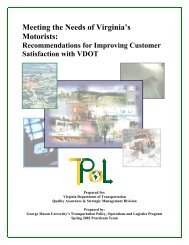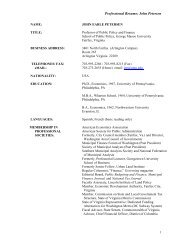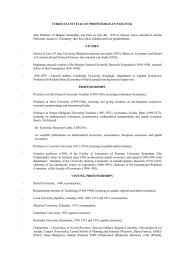Coordinating critical transportation infrastructure vulnerability
Coordinating critical transportation infrastructure vulnerability
Coordinating critical transportation infrastructure vulnerability
You also want an ePaper? Increase the reach of your titles
YUMPU automatically turns print PDFs into web optimized ePapers that Google loves.
1.2.2 The National Strategy for the Physical Protection of Critical<br />
Infrastructures and Key Assets<br />
The National Strategy for the Physical Protection of Critical Infrastructures and Key Assets, identifies a clear set<br />
of national goals and objectives and outlines the guiding principles that underpin efforts to secure<br />
the <strong>infrastructure</strong> and assets, including <strong>transportation</strong>, that are vital to national security, governance,<br />
public health and safety, economy, and public confidence. 5 Working towards achieving the goals<br />
and objectives in the Strategy also helps to meet the requirements set forth in the Homeland<br />
Security Act – especially those which are outlined for the National Capital Region Coordinator.<br />
The Strategy groups <strong>transportation</strong> systems by modes and identifies initiatives for each mode that<br />
will help to ensure their security. Modal goals and objectives that are germane to this report include:<br />
Passenger Rail and Railroads<br />
Improve security of intermodal <strong>transportation</strong><br />
Clearly delineate roles and responsibilities regarding surge requirements<br />
Highways, Trucking, and Busing<br />
Facilitate comprehensive risk, threat, and <strong>vulnerability</strong> assessments<br />
Develop guidelines and standard criteria for identifying and mitigating chokepoints<br />
Harden industry <strong>infrastructure</strong> against terrorism through technology<br />
Mass Transit<br />
Identify <strong>critical</strong> planning areas and develop appropriate guidelines and standards<br />
Identify protective impediments and implement security enhancements<br />
Work with other sectors to manage unique risks resulting from interdependencies.<br />
1.2.3 National Strategy for Homeland Security<br />
The National Strategy for Homeland Security identifies strategies to help secure the U.S. homeland from<br />
terrorist attacks. The National Strategy for Homeland Security aligns and focuses homeland security<br />
functions into six <strong>critical</strong> mission areas, each of which are relevant to the tasks undertaken in this<br />
project. Critical mission areas include:<br />
intelligence and warning,<br />
border and <strong>transportation</strong> security,<br />
5 The National Strategy for the Physical Protection of Critical Infrastructure and Key Assets. The White House. February, 2003.<br />
PUBP 710/722 Page 7 of 60<br />
WMATA Case Study June 5, 2003



